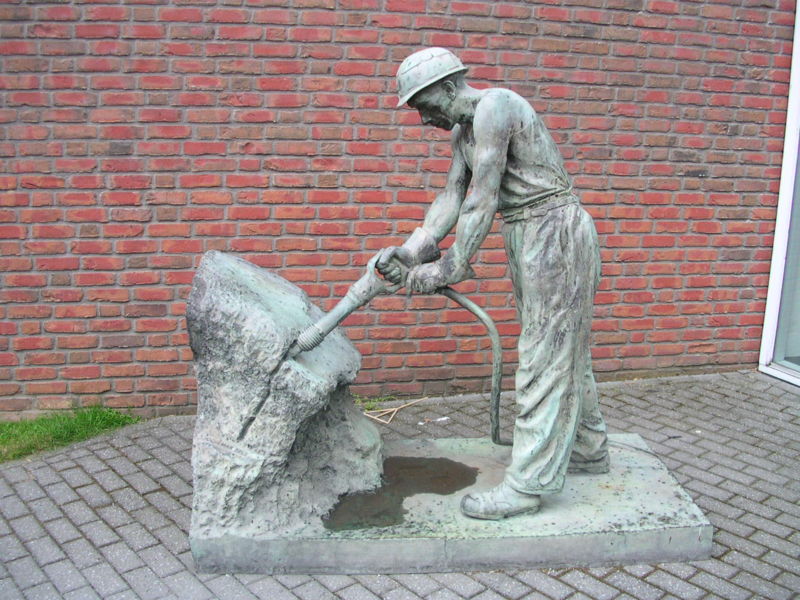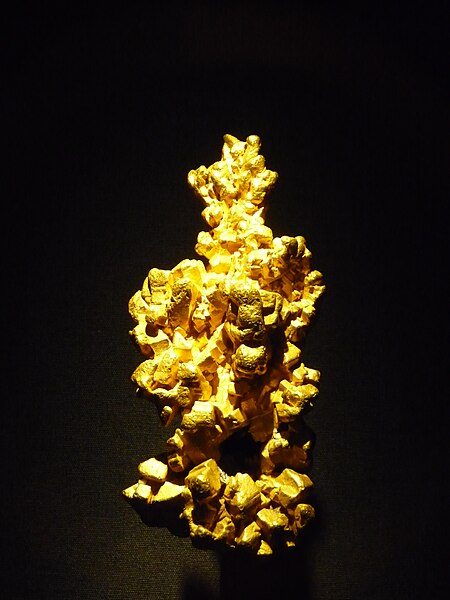 |
| Gold mining prisoners in the Kolyma Basin. They are mining placer gold that is found throughout the area. |
The
Gulag Ore Field or more correctly the Ducat gold/silver
deposit that is located in the central part of the Balygychan-Sugoi trough that
is a graben shaped depression that is located near the town of
Omsukchan,
Kolyma that adjoins to its north the
Okhotsk
– Chukota a marginal continental volcanic belt.
The deposits of gold are centered on a Cretaceous (ca. 120
million year old) volcanic dome consisting of ultra-potassic rhyolites,
ignimbrites and tuff that are interlayered with black argillites. The whole volcanic complex is intruded at
depth by a late Cretaceous (ca. 85 million year old) granite that is from 1,200
– 1,300 meters below the surface.
 |
| More gold miners at work in the Kolyma Basin |
There were pulses of igneous activity that caused
hydrothermal activity to occur in the dome that involved large quantities of
fractured, porous and highly permeable Cretaceous rhyolite sills and other
steeply dipping subvolcanic bodies to be affected covering an area that covered
more then 25 square kilometers.
Most of the known mineralization was later to the younger
intrusion that includes tin bearing greisen-type that occurs in the contact
zones of the granitic plutons. They ore deposits himself were located at a
considerable distance from the granite.
Part of the Kolyma
Basin is within the Arctic
Circle giving it a sub-Arctic climate having very cold winters
that can last for up to six months. Most of the area is covered with permafrost
and tundra. During the winter temperatures range from -19°C to -38°C with even
lower temperatures found in the interior. Besides gold there are also rich
reserves of silver, 10, tungsten, mercury, antimony, coal, oil and peat. It has
been estimated that the area contains in addition to gold 1.2 billion tons of
oil and one point 5,000,000,000 m³ of gas.
This is the area whose mineral wealth was discovered by Yuri
Bilibin in the 1920s that was quickly developed into the infamous Gulag prison
camps by Stalin in the 1930s. There was also the area Bilibin used as the model
for his theory of Metallogeny and Global Tectonics that has gained much
traction sense of the world of geology.
Development began in 1932 and of Joseph Stalin the Kolyma
Basin became the most notorious
place for the Gulag labor camps. It has been estimated that over 1 million
people died en route to the area or in the Kolyma’s
between from 1932 until 1954. It was Kolyma’s reputation
that caused Aleksandr Solzhenitsyn ferrite his famous book the Gulag
Archipelago. In this book Solzhenitsyn came to characterize it as the “pole
cold and cruelty.”
Gold and platinum were found in the Kolyma
during the time when industrialization began in the USSR
under Stalin’s First Five Year Plan in a period when the need for capital that
would finance this economic development.
The Kolyma Basin
gold was a perfect fit and development of the basin began in 1932 based on
prisoner labor.
In 1932 construction began on Kolyma
Highway into the interior those that become known
as the Road of Bones because of the number of people in Paris
in its construction. This role eventually came to serve 80 different camps that
were not have around the region of the uninhabited taiga. The first director of
the Kolyma camps was Eduard Berzin who was the Cheka
officer that was removed in 1937 and shot during the period of great purges of
the USSR.
Far Eastern Russia
geologically is North American plate that also includes Kamchatka
Peninsula in northern Hokkaido
Island of Japan. This being so it is probable that the gold deposits of this
part of Siberia are closely related to those found in
the Tintina gold belt of Alaska.
It also indicates that most landmasses on Earth are really just one
supercontinent with the sole exception being Antarctica.






